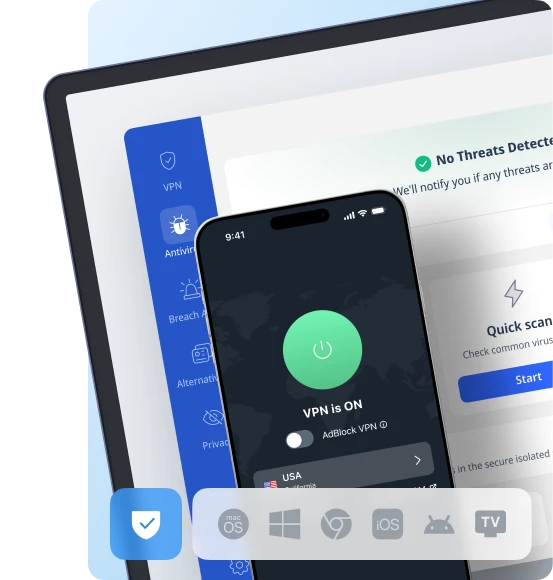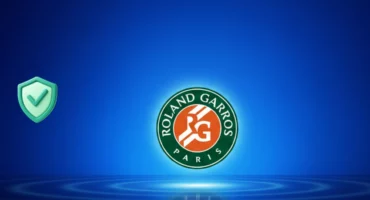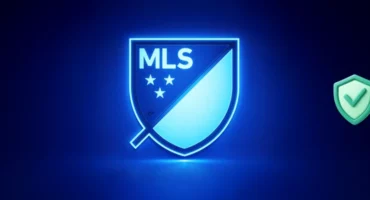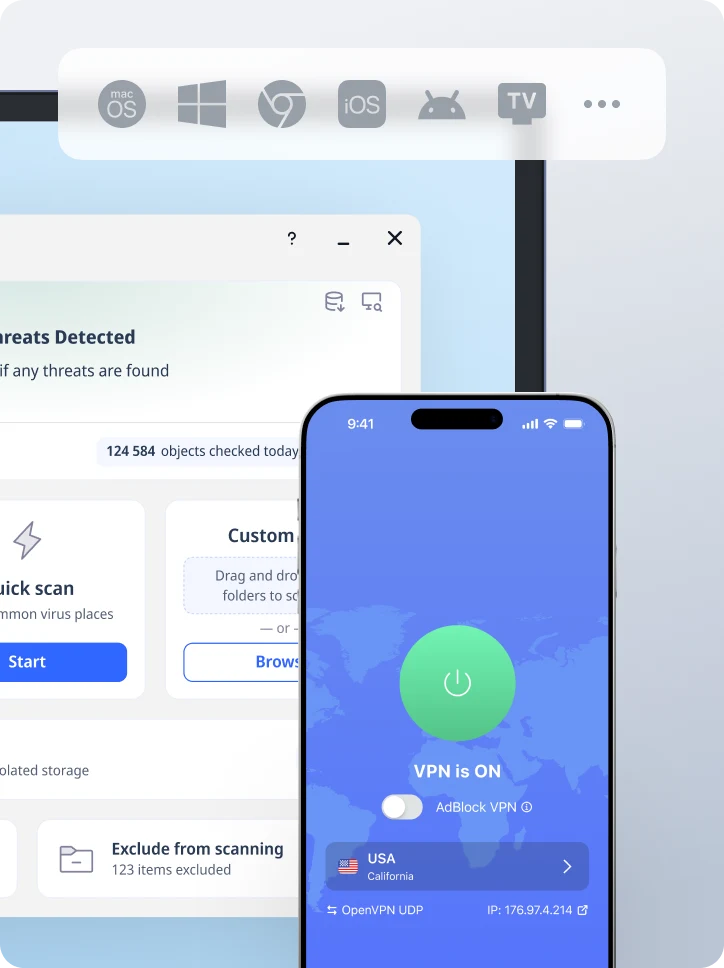Types of Internet Connection: A Complete Guide
In today’s world, we can’t live without the Internet and data plan, as without which we can’t talk to our loved ones on video calls, stream movies, browse online etc. However, not all Internet connections are the same. Different technology methods are used in Internet connections to get you online. And so, there are different types of Internet connections. In this article, we will demystify the Internet connections (DSL, cable, fiber, satellite, fixed wireless, mobile broadband, dial-up, leased lines, and others) and why they do what they do.
You can choose the correct Internet connection for your needs by knowing how fast they are and where they are available. Selecting the suitable Internet connection has a lot to do with Internet speed because with a fast Internet speed you will have a good online experience. If you have considered buying a VPN to secure your own connection, or you are just a casual web surfer, or you watch loads of shows on Netflix, or you are living in a rural area with only a handful of choices, there’s no need to worry. There are different types of Internet connections to meet different needs of various Internet users. Broadband provides high speed Internet access as opposed to dial up connection and permits use of the Internet and telephone simultaneously, and is efficient in use of multiple users. Anyway, let’s discuss all types of Internet connections!

Introduction to Internet connections
In modern life, the Internet is essential and any robust Internet connection is necessary for communication, education, entertainment and business. An Internet connection is a collection of how certain devices or local networks may be linked with the global Internet. Different types of Internet connection exist, which have separate ranges of speed with different subjects. It is important to know how to understand the different types of Internet connections so that as we make choices on Internet service providers and which Internet connection best meets one’s needs.
DSL (Digital Subscriber Line)
DSL stands for Digital Subscriber Line. The Internet is delivered via your existing telephone lines (copper wires) that have been installed in almost every home. Data Service Layer can make use of the same phone line as voice calls. DSL is widely available because this allows it to be offered in places that have not been upgraded to newer high speed infrastructure. The Internet signals transmitted from phone lines are called DSL. DSL means that the telephone and the Internet can be used at the same time, as the data is sent at frequencies, which do not disturb voice calls. DSL is typically capable of speeds of about 1 Mbps at the low end and over 100 Mbps at the high end (in areas with advanced DSL technology). For the most part, DSL upload speeds are typically much slower than downloads, suitable for sending emails and light uploads but not large data backups.
Pros:
✅It uses existing telephone lines, so it’s available where many telephones can be found (even some rural or older telephone areas).
✅Generally, cost effective compared to other high speed broadband Internet connections.
✅Does not tie up the phone line for calls like an old the dialup.
Cons:
❌It is also slower than the speeds offered by cable or fiber Internet. The heavy streaming or large download may give it a bother.
❌You can reasonably expect that DSL may be suitable for light to moderate Internet use (simple browsing of websites, sending emails, occasional social media browsing, streaming videos in standard or HD quality). In places that don’t have cable or fiber, it’s a common choice. DSL can be a economical method, if you simply do basic tasks, or do not have a large household online. Yet it may not be so suitable for data-intensive work such as constant gigantic downloads or 4K streaming, and running a high-speed VPN over a low-speed DSL network can seriously make your speed drop.
Cable Internet
High speed Internet access is provided through cable television via the same coaxial cables by using cable Internet service. Cable connection uses cable TV line to fast Internet service. Access to the Internet provided by way of cable Internet can be incredibly fast, with differing speed connections for uploading and downloading data.
In general, cable Internet is faster than DSL: download speeds can be as low as 25 Mbps but can be as high as 1000 Mbps (1 Gbps) or more with the current technologies. As a result, cable is preferred by households that are big on video streaming, online gaming and households with a bunch of users logged into the Internet at the same time.
Broadband is always ‘on’ and does not need to be dialed in and cable connections are a type of broadband. Note that cable Internet is almost always a shared bandwidth service, meaning your connection is part of a neighborhood network node, and if there are a great many people using the connection at the same time, you can expect lower speeds due to congestion. Also, the cable is almost always an asymmetric service, which means that it is optimized for download instead of upload . Such as, your cable plan may provide 200Mbps down and 10Mbps up. Most users don’t have a problem with this though because most common activities (browsing, streaming, downloading) are download heavy, but activity that requires upload (video conferencing, uploading large files) won’t be as fast.
Pros:
✅Typically, speeds are fairly fast for download, plus it’s great for streaming, gaming, and downloading heavy files.
✅Already existing cable TV networks allow them to be widely available in cities and many towns.
Cons:
❌The downloads being faster than uploads can be a negative for content creators and avid video callers.
❌However, shared connection in local area can slow down at peak usage times.
In rural areas availability may be limited (for example cable networks mostly don’t come very far into remote areas).
Cable Internet is a good all around choice for general home use, typical uses. It can cope with a number of devices streaming Netflix or YouTube, an online gaming session and video calls or work from home with the VPN without breaking a sweat. Small businesses also commonly use it for the speed to availability balance. The only option to broadband if you can’t get fiber-optic Internet in your area is cable, which is generally the next fastest option.
Fiber-optic Internet
The fastest type of Internet connection for most consumers and available to many customers these days is fiber-optic Internet (or just “fiber”). Fiber optic Internet is built on fiber optic cables which are made up of strands of glass or plastic through which data is transmitted in the form of pulses of light. It permits extremely low signal loss when transmitting extremely large amounts of data very far, very quickly.
In fiber optic Internet, data is conveyed via light signals, which is less prone to interference as compared to the copper cables. If you use the Internet a lot and can’t afford to lose connection for a second, fiber optic Internet is your route. Fiber provides many fiber services with speeds of download and upload of up to 300 Mbps, 500 Mbps, or even 1 Gbps (1000 Mbps) and beyond. Some fiber ISPs are bringing in multi giga bit plans (2 Gbps, 5 Gbps etc.) in some areas, far beyond what a person needs currently. One, data is sent as light and thus there is minimal latency (the delay of signal transmission) and two there is no electrical interference which affects the signal. The reason therefore is that fiber is very reliable and consistent.
One of the biggest advantages of fiber is that it frequently offers symmetrical speeds, or just as fast an upload speed as a download speed. Fiber is great for things such as video conferencing, cloud backups, and uploading your videos that go much quicker than on any other connection type where upload speeds are slower.
But fiber-optic Internet is not available everywhere yet. There has always been growth in many urban and suburban areas, but rural coverage is limited. Connecting fiber infrastructure is costly and slow, with new fiber cables to lay down, so many rural or underserved areas haven’t rolled out fiber service yet. Fiber plans, where it is available, may somewhat cost more than DSL or basic cable, but the price has dropped off and is often equivalent to a cable plan in light of its superior performance.
Pros:
✅Fastest speeds: Offers the highest download and upload speeds of all connection types, often 100 Mbps to 1 Gbps or more . Good for household with lots of data heavy use.
✅Low latency: Very responsive connection, ideal for online gaming, HD video calls, and other real-time applications.
✅Symmetrical bandwidth: Uploads speeds can equal download speeds, which come in handy for tasks such as uploading content, using cloud services and teleconferencing.
Reliable: Electrical noise and weather don’t interfere with cable transmission (which is generally buried underground and conducted using light signals).
Cons:
❌Availability: Mainly located in cities and towns, little coverage in many areas. In rural or outlying areas, fiber may not yet be an option.
❌For Internet providers, installation cost can be high (which some times then means higher costs each month for consumers, but it doesn’t have to be that high, depending on where you live).
❌If your home isn’t already connected, installation can take time because the service may require a technician to run a new fiber line to your home.
Fiber is the first choice for users who require or choose the best Internet experience for their users. And it’s great for watching streaming 4K (or even 8K) video on multiple devices simultaneously, online gaming at the highest settings, running a home office with frequent file transfers or running a VPN at all time, or managing a smart home with a lot of equipment. Businesses that use cloud services or who have many users are also common victims. In short, if you can get your hands on fiber and you can afford it, it’s a future-proof option that should not spill your beans on anything you throw at it.
Satellite Internet
Satellite Internet beams data from satellites in orbit down to a satellite dish at your home (and vice versa). This type of connection can be accessed almost anywhere in the globe because it comes from satellites in space. DSL, cable, or fiber infrastructure is often not available in rural or remote areas, making it the only viable Internet option for the people there.
In the past, satellite Internet has been supplied with slower speeds. Satellite download speeds typify in the neighborhood of 25 Mbps up to about 100–150 Mbps in newer offerings. This is a large leap forward from previous satellite services in the range of less than 10 Mbps. Although the biggest problem with satellite Internet is latency. The reason for the latency is that the data is sent out into space (often to a satellite in geostationary orbit thousands of miles away) and back, which takes a while – round trip time is 600 ms or more for traditional satellite connections.
That’s why you may experience a noticeable delay in online gaming and video. Newer low-earth orbit satellite systems (for example, Starlink) have reduced latency significantly (to ~20-50 ms) because the satellites are much closer to Earth, making satellite more competitive with wired connections.
Weather can also have an effect on satellite connections. Certain things like heavy rain, storms or a thick cloud cover can disrupt the signal between your dish and the satellite with this resulting to slowdown or in some cases, outage (sometimes termed “rain fade”). Satellite plans often have data caps or usage limits, and wired broadband connection can be pricier than satellite, which can be expensive to deploy and maintain thanks to the satellite technology.
Pros:
✅It’s ubiquitous: Internet access is possible in areas where no other option is available (rural countryside, mountainous areas, even over ships or RVs, with some appropriate equipment).
✅Doesn’t need phone lines or cables if the infrastructure is not available.
✅With one of the newer satellite services, you can get up to speeds and reliability in a 3G network making it feasible for general usage if you have no alternative.
Cons:
❌Here we have high latency, this means that it takes time for the signal to travel, so real time things like gaming, video chats, VPN use etc will have a lag.
❌Performance may drop in bad weather (rain, snow, storm), due to interference with the signal.
Usually much more expensive per month than other connections and frequently has limitations on the amount of data you can use at high speed (you might only be able to use so much data at high speed, for instance).
❌While somewhat faster than satellite Internet in practice, slower than cable or fiber, usually around 25—100 Mbps for many, which may be straining for heavy streaming or large downloads.
❌Satellite Internet is typically used for scenarios when another form of Internet, wired broadband (DSL, cable, fiber) or cell signal, is not available. General web browsing, emails and streaming video works (with some buffering time) and it’s a lifeline for rural homes and farms to connect to the online world. Although it is less ideal for competitive online gaming or frequent large file transfers.
Fixed wireless Internet
Internet signals through fixed wireless Internet access is provided using radio waves; it transmits via high-speed connectivity from a local tower to a fixed receiver (antenna) on your home or business. Internet using fixed wireless is accomplished when local towers provide connectivity, making sure that the signals get . While mobile wireless connects to moving devices such as phones, a fixed wireless system is designed to connect to a specific location like a wired service without the need for a physical wire. Websites in this category provide services like WISPs (Wireless Internet Service Providers) using microwave or radio links or the newer services offering home Internet over 5G where you have a 5G receiver to your house.
If you can achieve (or near) line of sight to the provider’s tower, fixed wireless can deliver broadband speeds wirelessly. The speeds can be very good – comparable to DSL or basic cable. From about 10 Mbps running up to 100 Mbps, and sometimes as high as 300 Mbps, under ideal conditions, many fixed wireless plans are available. Your actual speed available will depend on the technology use (older wireless tech vs. newer 4G/5G based systems) and your distance to the tower. Fixed wireless is typically much lower latency than satellite since the signals are traveling terrestrially (seldomly to the extent of a cell phone’s latency of 20–50 ms).
Pros:
Brings access to rural areas, since broadband can travel through fiber or cable only if there’s a wireless tower or relay within range. Local providers often use it in rural communities.
Speeds are good: Gives the whole broadband speeds, i.e. multi megabit, enough for video calls, streaming and routine Internet use. Fixed wireless of the higher grade (e.g. 5G home Internet) can be as fast as cable, if conditions are right.
Installation: it is faster than getting new cables, such as a technician would mount a small antenna and point it to the tower or he would give you the receiver device.
Cons:
Line of sight needed: If your tower is not covered by buildings or hills and you are not surrounded by thick trees, it works at its best. It can have its signal weakened and the speeds reduced by physical obstacles or distance.
It can perform variably: speed and reliability depend on weather, signal damage or network congestion. That’s not to say it will be consistently as fast as fiber or cable.
Not every area has a fixed wireless provider, so availability is patchy. It’s very region specific and to this end some rural areas will have great WISP coverage whilst others will have none. Urban 5G home Internet has begun emerging but it’s still available only in few cities and/or neighborhoods.
Some typical uses of fixed wireless: When wired broadband is not available or too expensive to install in certain areas, fixed wireless is a good solution. Fixed wireless is used by rural homes and farms when a local ISP provides it because it delivers decent Internet to stream, work from home, and general use. 5G home Internet services are a wireless alternative to cable/fiber in cities, and are good for renters or anyone who wants an easy set it and forget it home broadband option. With strong signal and associated bandwidth, you can easily do bandwidth intensive tasks (HD streaming, online gaming, cloud work).
Mobile broadband (3G/4G/5G)
Mobile broadband means cellular (the same as modern mobile phone networks) networks to provide an Internet connection to a mobile device. A wireless network for connecting multiple devices is created by mobile hotspots. The Internet can be accessed with a smartphone (tethering or hotspot), dedicated mobile hotspot device or USB modem. The wireless and portable nature of mobile broadband means that as long as you have cell signal from your provider (3G, 4G, 5G, etc.), you can go online whether at home, on the bus, or abroad. Home users can also make use of mobile broadband as a primary method for their Internet access, especially if they are unable to find a better solution, or have an unlimited data package.
With mobile broadband, it has become a given that the performance has greatly improved over the generations of cellular technology. 3G (third generation) networks introduced the ability to get Internet data on phones, but they are painfully slow by modern standardsLreal world speeds are normally below 1–3 Mbps, just enough for very basic browsing. 4G LTE (fourth generation) enabled full broadband type speeds to be used on the move. With good conditions, typical 4G download speed can be near 100 Mbps; with typical 4G speeds ranging about from 5 Mbps up to 50+ Mbps. This makes for pretty good streaming and video calling by smartphones and hotspots. But now, 5G (fifth generation) networks are rolling out, and they offer speeds even higher still — anywhere from 50 Mbps to 300 Mbps.
Pros:
✅This makes it highly accessible as you can use it anywhere you get a cell signal, and in many areas, this is everywhere owing to the nationwide cellular networks. Great for mobility and remote access (road trips, vacation homes, etc.).
✅Comes with easy set up, no wires to install. The hotspot device might be plugged directly for home use, or you can use the phone’s hotspot feature to connect laptops, etc.
✅Modern mobile networks can deal with streaming, conferencing and the general web usage without a problem, especially so 4G/5G networks that is also capable of very fast speeds when in coverage, which can handle very heavy data usage.
✅The biggest advantage of having mobile Internet is that you can take your Internet with you. It also works as a backup if your main home Internet fails, so long as you can switch on your phone’s hotspot.
Cons:
❌There are two issues: Data caps and cost. For some, truly unlimited, high speed data plans are not cheap. If you’ve a small cap, you might not find it cost-effective to use mobile data as your whole home Internet needs.
❌Speeds vary: they may be dependent on signal strength, network traffic, or even moving around. You may see lower speeds in congested areas or during peak times. Slow connections, such as 3G or hardly 4G connections may be available in rural areas.
❌Latency & reliability: Latency on 4G/5G is not bad at all (around 20–50 ms like cable), but it may spike if your 4G tower coverage is poor. If, on the other hand, you are in a patchy reception spot, the connection will drop out more often.
❌Requires coverage (mobile broadband won’t work if you’re travelling to or currently living in a dead zone, such as an area without cell service). You are bound to carrier coverage maps.
❌Common use cases: Mobile broadband works well for those who want to have Internet wherever they go: for example, while travelling, working as a digital nomad or when commuting and connecting laptops by tethering them. If you have 4G or 5G broadband in rural areas, you can also use it for home if you don’t have good wired options: for streaming TV or work from home, it may be capable. Mobile Internet can be used by the gamers and heavy streamers but they can observe more variability than wired connection.
Leased lines (dedicated connections)
Special kind of Internet connection usually used by businesses and organizations that have to guarantee extremely private and reliable connection, leased lines. The leased line is basically a connection dedicated between your location and the service provider’s network that is reserved solely for your use and having a fixed bandwidth. On the flip side, while other residential connections share bandwidth with neighbors, they don’t leave any capacity to themselves and therefore experience inconsistent speeds and high latency much of the time. Typically, leased lines are delivered over fiber optic cable and may be configured symmetrical high speeds like 100 Mbps, 500 Mbps, and 1 Gbps lines that are reserved only for that company. Consequently, the provider typically provides strong Service Level Agreements (SLAs) to customers, promising high uptime (e.g. 99.9% availability), and fast repair times should something goes wrong.
Aside from this, leased lines are popular among large businesses, educational institutions as well as other organizations that use Internet connectivity to be online since such benefits make it a better option. They are also used to connect two offices in two separate locations (point to point) securely, or to connect to data centers. The term “leased line” can refer to older technology such as T1/T3 lines or more recent Ethernet fiber lines. Older technologies like integrated services digital network (ISDN) can also be used as leased lines, ISDN were particularly used to transmit voice, audio and data over telephone lines. ISDN significantly improves speeds in both upstream and downstream directions and its top bandwidth is up to 128 kbit/s in both directions. The concept in every instance is that you are paying for a private pipe for Internet service.
Pros:
✅Traffic priority: When others in the apartment are using the connection, you don’t lose speed and performance. No slowdowns at peak hours at all.
✅Symmetrical speeds (equally upload and download speed): Of which this is usually the case which can be very important for businesses that need to sync data, host servers, video conferencing, etc.
✅Direct and secure: It’s a dedicated connection and fuller than POP3, and more secure since you don’t for the connection to be routed through another service, making it ideal for business communication.
Cons:
❌Leased lines are extremely expensive when compared to residential plans. The dedicated service and SLAs come at a premium cost from the businesses. Usually you pay for it as an organization, not an individual.
❌Installation: It can be an involved process to get a leased line installed, particularly if the method is via fiber to your building. Setup fees and longer lead times are possible.
❌For the home users: Most of the households can survive with a mingle cable or fiber line. A leased line is much more than consumers usually require for or have a budget on.
❌Common uses: Leased lines are mainly for business and enterprise purpose. A leased line is one that is used by a company that must have guaranteed connectivity for cloud services or a hotel that requires a guaranteed reliable Internet connection for guests. Leased lines are used by banks, hospitals and ISPs themselves to connect infrastructure. A leased line is rare for a regular home user (too costly and unnecessary). In cases where a company can not afford to ever lose Internet access, cannot have any downtime, and is transferring extremely large amounts of data (say, a stock trading firm or research lab), leased lines are worth the cost. In short, leased lines are the ‘corporate grade’ Internet solution.
Conclusion
Finally, none of the Internet connection types are ‘best’ for everyone, it actually depends on the things you do over the Internet and where you live. The good news is all great is that most people have at least a couple of options. If you’re just an occasional user, you may go for cost and pick up DSL or a basic cable plan. Unless you are a power user or have a big household to split the high tier cable or fiber will serve you much well. Availability will determine what rural residents could choose between satellite and fixed wireless, while business users could also opt for enterprise solutions like leased lines for the highest degree of reliability. Once you know the differences in speed, reliability, and coverage between these connections, you’ll be making an informed choice regarding the best way to get connected, and then, once online, you can browse securely, stream your favorite shows with confidence that your Internet connection can handle it.
You can enhance your connection stability by using VeePN — a premium VPN service with 2,500+ servers all over the world and WireGuard protocol that ensures you have high connection speeds, regardless how far a remote server is. You can also use an Optimal Location feature to access the fastest server available. Download VeePN now and enjoy a 30-day money-back guarantee!
VeePN is freedom
Download VeePN Client for All Platforms
Enjoy a smooth VPN experience anywhere, anytime. No matter the device you have — phone or laptop, tablet or router — VeePN’s next-gen data protection and ultra-fast speeds will cover all of them.
Download for PC Download for Mac IOS and Android App
IOS and Android App
Want secure browsing while reading this?
See the difference for yourself - Try VeePN PRO for 3-days for $1, no risk, no pressure.
Start My $1 TrialThen VeePN PRO 1-year plan







